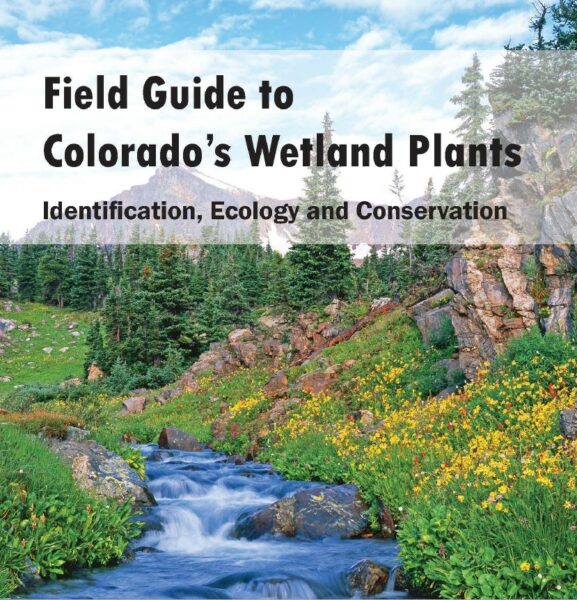We normally think of Colorado as being very dry, but in fact about 3% of the state can be classified as wetlands. While this is not a huge number, wetlands are a very important part of the state’s ecology, providing habitat for a wide variety of plants.
 Wetlands are not restricted to any one area of Colorado but can be found across the state. Even the Denver area has wetlands. However, wetland habitat and the plants they support can vary widely from place to place. Mountain wetlands, for instance, are home to very different plants than would be found in wetlands on the eastern plains. Because of this, plant species identification can be a challenge, so Colorado State University’s Natural Heritage Program — which sponsors the Colorado Wetland Information Center — has produced a series of handy field guides on wetland plants by geographic area. The series includes:
Wetlands are not restricted to any one area of Colorado but can be found across the state. Even the Denver area has wetlands. However, wetland habitat and the plants they support can vary widely from place to place. Mountain wetlands, for instance, are home to very different plants than would be found in wetlands on the eastern plains. Because of this, plant species identification can be a challenge, so Colorado State University’s Natural Heritage Program — which sponsors the Colorado Wetland Information Center — has produced a series of handy field guides on wetland plants by geographic area. The series includes:
- Common Wetland Plants of Colorado’s Eastern Plains
- Common Wetland Plants of Colorado’s Southern Rocky Mountains
- Common Wetland Plants of Colorado’s Western Slope
- Field Guide to Colorado’s Wetland Plants
These illustrated guides can be useful for anyone from scientists to casual observers curious about an interesting-looking plant. Because habitat loss, climate change, and other factors mean that many of these plant species are imperiled, the guide also includes information on the conservation status of each species in addition to physical characteristics used for identification.
In 2020, the Natural Heritage Program issued a Wetland Program Plan 2020-2024, describing the state’s goals for conservation of wetlands. Additional studies can be accessed via the State Publications Library catalog.
- How to Spot the Differences Between Eagles and Hawks - August 16, 2021
- How Transportation Projects Help Tell the Story of Colorado’s Past - August 9, 2021
- Time Machine Tuesday: The Night the Castlewood Canyon Dam Gave Way - August 3, 2021